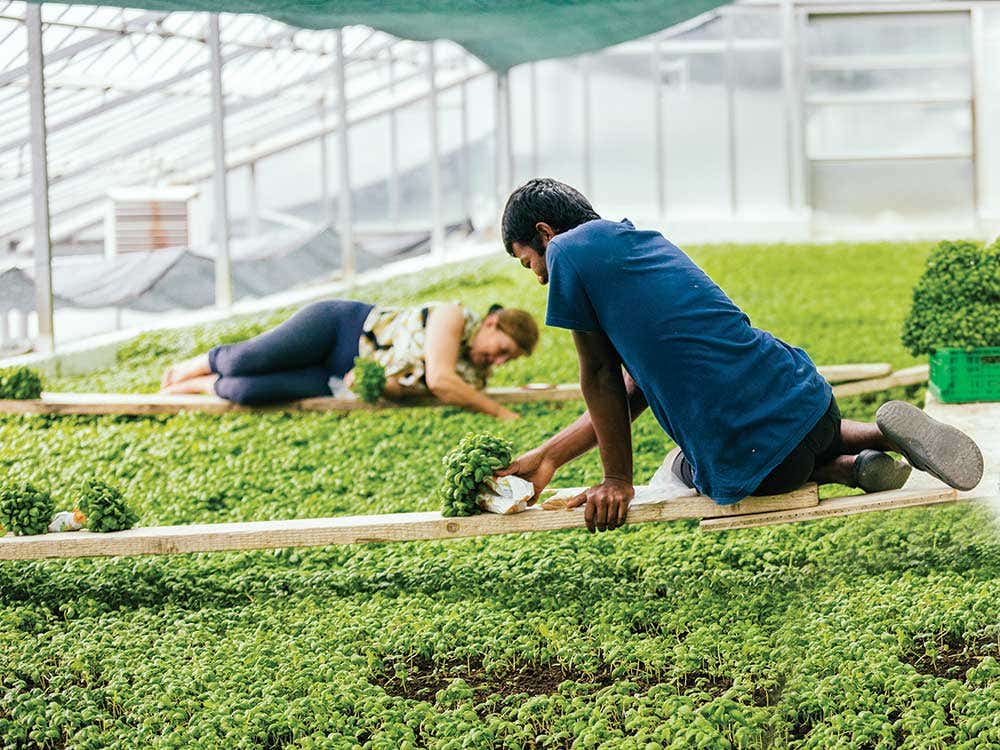
Journey to the Place Where Pesto Was Born
Somewhere on its path to global ubiquity, pesto became a catchall name for any random herby sauce thrown in a blender. Now Ligurians want it back
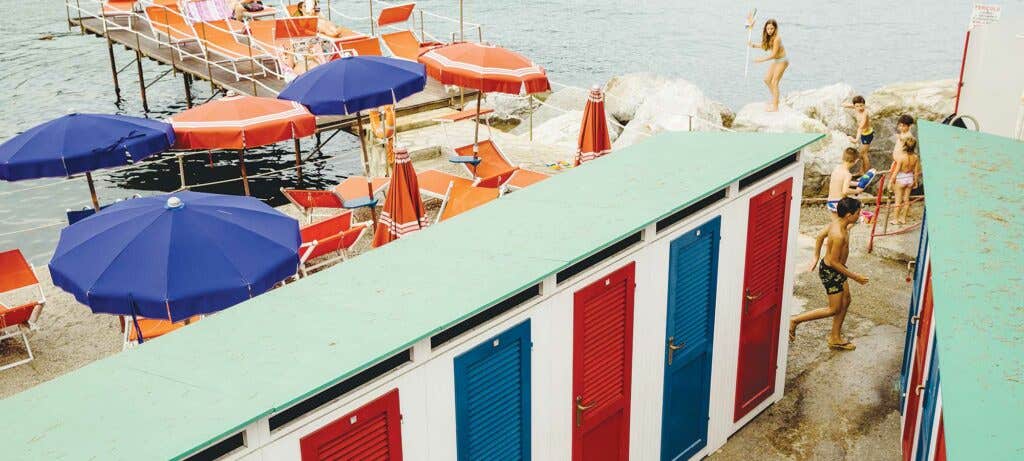
If you are in Pra’ and you don’t grow basil, you are nobody,” declares the basil farmer Roggerio Rossi. The sky above his sprawling greenhouses is gray, the air heavy, a climatic state called macaja in the Genoese dialect. Inside, the atmosphere is static, still, electric green. The scent is peppery, briny, more delicate than freshly clipped grass, but intoxicating and pungent. A carpet of Basilico Genovese runs full-bleed from wall to wall. It’s fluffy—almost awake—and appears to be reaching up, exploding with small, teardrop-shaped leaves. Five workers recline on their sides across wooden planks suspended over the fragrant flora. Like a pack of Titian’s Venuses, they pick individual stems, roots intact, and fashion them into bouquets.Liguria is Italy’s most famous basil-growing region. The herb is lifeblood here. It floods the stands of Genoa’s Mercato Orientale, a dizzying, circular market hidden on the interior of a city block. It’s sold in pots in tiny town squares and arranged in vases on restaurant tables. Everyone agrees that the best basil in Liguria is grown in the village of Pra’. Proximity to the shore is said to give a bright, oceanic quality to the crops. Much of the Italian Riviera is beautiful—coral- and butter-colored beach towns, slightly decayed but shimmering with low-key wealth and domestic tourism. Pra’ is not beautiful. The waterfront is a gray mass of industrial docks and slips. Older, broken-down greenhouses disintegrate along a highway skirting the ocean. Newer basil farms are tucked into terraced hillsides high above.
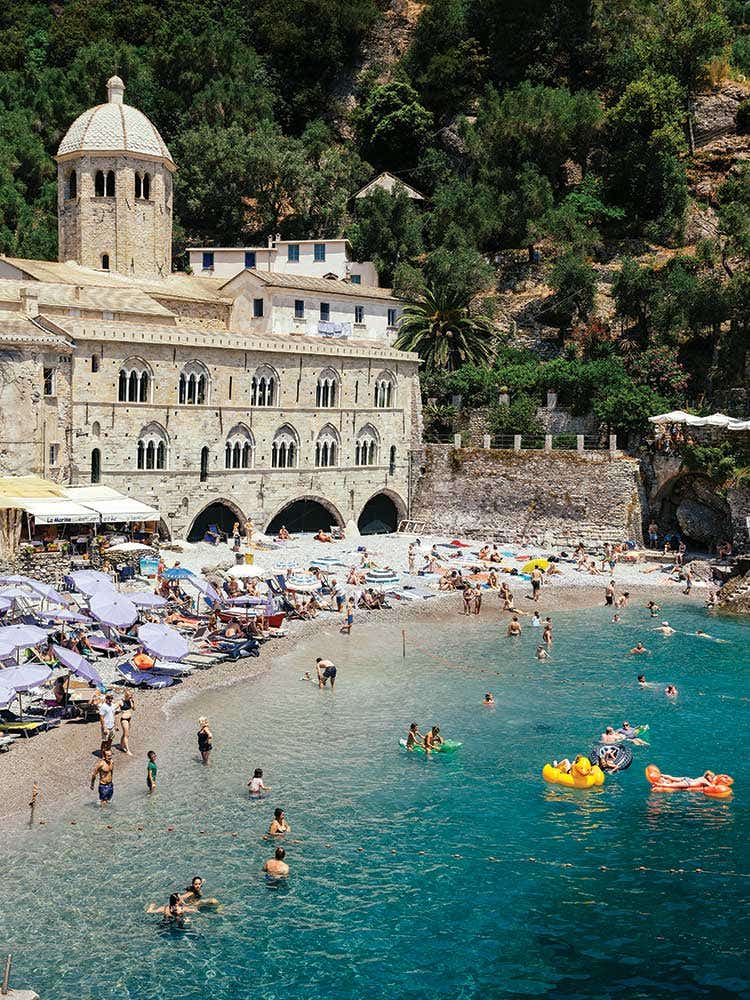
Rossi's team of recumbent pickers pull the stems before they grow too thick, too strongly flavored, or minty. These are qualities undesirable in Ligurian basil, prized for its mild, elegant flavor and delicate leaves. During the warm months, it's grown for 28 to 30 days. In winter, grow time stretches to nearly 60 days. Rossi grows his basil according to DOP (denominazione d'origine protetta) standards, which protect the integrity of the product and emphasize its specific terroir like that of Gorgonzola from Piedmont or balsamico of Modena. Italian pop plays from a portable radio, and the workers chat, occasionally shifting on their sides to reach another patch. The nosegays are wrapped in paper and piled into a green mountain.
Basil is a cornerstone of the region's cucina profumata (aromatic cuisine). In summer, marjoram, thyme, and borage redolent with earth and pepper explode from craggy hillsides. Ripe, golden-fleshed peaches and fuzzy, swollen apricots are heaped at fruit stands and roadside markets. Brilliant silver anchovies smelling of Mediterranean salt are soaked in agrodolce and golden olive oil to be served at the start of many meals. But the perfume that truly defines and unifies Liguria is pesto.
If you live here, you eat pesto. At least once a week a bundle of basil is picked or purchased. The mortar and pestle are pulled from their shelf. Pine nuts are muddled with garlic and salt; basil is drizzled with olive oil and vigorously worked into a smooth paste. (Both pestle and pesto derive from the verb pestare, meaning to crush or clobber.) Cheese from Parma and Sardinia is stirred in at the end. Each ingredient is part of a Ligurian code—a language that is made up of ocean, mountains, and the old trade routes imprinted upon them.
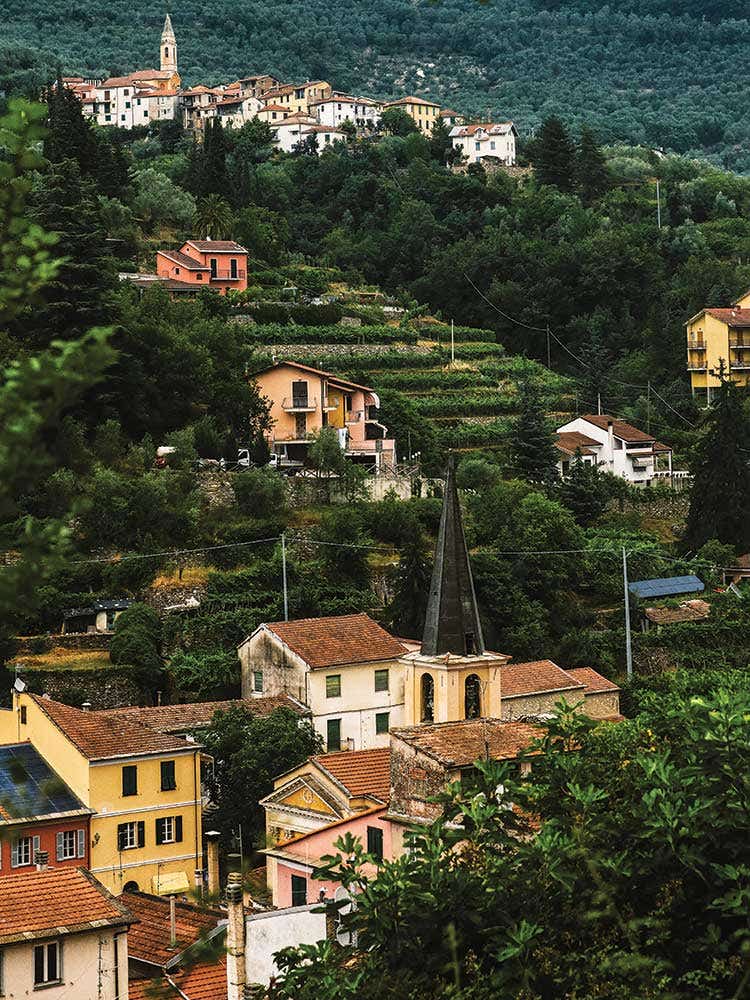
Every menu of every trattoria and osteria here contains at least one kind of pasta with pesto. Linguine-like trennete or short, twisted trofie are dressed, not drowned, with pesto genovese. Trofie are said to have been invented in the nearby seaside town of Recco, when a pasta maker rubbed her hands together after kneading a batch of dough. The curled pieces that fell away became trofie.
Sometimes green beans and potatoes are tossed in. There’s gnocchi with pesto, and ravioli with pesto, and pesto spooned over swordfish. Pesto gets dropped into the local minestrone as a seasoning. There’s also green lasagna, slippery layers of fresh pasta known romantically as mandilli di seta, or “silk handkerchiefs,” folded with pesto.
"We are Italian, so pasta is always here," says the basil farmer Rossi, pointing to his forehead. "We are always trying to solve the problem, 'What can I put on my pasta today?' Here, we solve it with pesto."
Judging by its universal popularity, pesto solves the world’s problems too. Except somewhere along the path to global pasta-sauce ubiquity, Liguria’s best-known export lost its distinctive character. Sailing forth from the great trading port of Genoa, pesto conquered the world—but as it settled in foreign places, it acclimated and assimilated. Its success rendered it indistinct, nationless.
Now pesto can be anything we want it to be. It’s become a catchall term for anything vaguely herbaceous and thrown into a blender. But the Genoese will tell you this isn’t true. They will tell you that pesto is an alchemy that can exist only in its birthplace. “The basil must see the sea,” says Rossi. “If it doesn’t see the sea, it is not Genoese.”
Like Emilia Mussini at Ö Magazín, a small restaurant in Portofino, they’ll inform you: “The first thing we give to a baby, after milk, is pesto.” They’ll tell you that pesto belongs to this place. And they’ll tell you that they’re taking it back.
Osteria Baccicin dü Carü looks like a home. Gianni Bruzzone and his sister, Rosella, are known for the pesto they make in this small cottage of a restaurant in the hills just west of Genoa. Unfortunately, on this particular afternoon they’re closed. “A prince from Qatar wanted to come today,” Gianni says when he opens the door. “We said no.”Luckily Roberto Panizza has accompanied me. Genoa native, restaurateur, and self-styled ambassador of pesto, Panizza holds sway in the universe of serious pesto makers. In 2007, he created the Genoa Pesto World Championship. Held every two years, it’s a competition to promote the product and teach the world how to make it properly in a mortar with a pestle. (According to the championship website: “Behind pesto is history, and art, and a quality of life.… The contest can be won by Italians or by foreigners. But above all, the winner is Pesto, a healthy, natural and democratic sauce.”)Gianni lets us in and insists that we stay for lunch.
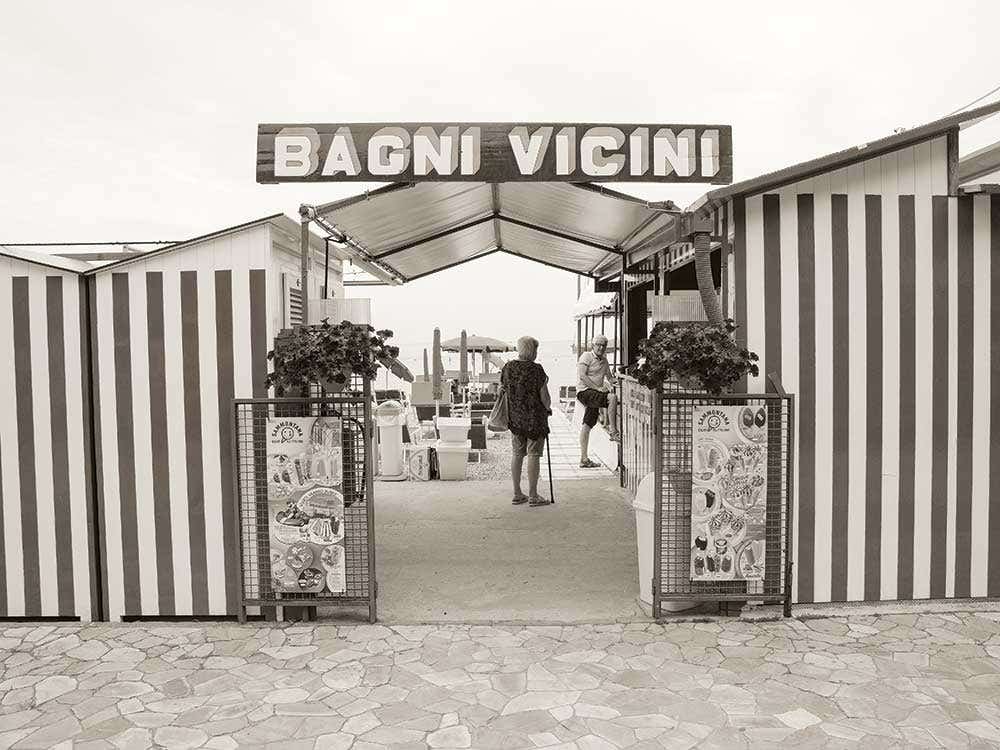
First, there are anchovies, both fried and marinated in sweet vinegar and oil. Then comes the pesto. Gianni brings out plates piled with gnocchi, each little dumpling coated in vibrant green sauce. Next, thin strings of taglialini with borage and marjoram tossed together in a mortar slicked with pesto. It’s served twirled into chewy, shining piles, the color of mossy lagoons. The pesto is perfect in its imperfection. It’s a consistency that could be achieved only by hand muddling, and each ingredient—the garlic, Parmigiano-Reggiano and Pecorino Sardo, pine nuts, and basil—is visible, a fine, juicy silt of gold and green suspended in oil. The basil, though thoroughly, finely clobbered, tastes alive, as if still reaching toward the sun.
One and then two bottles of pigato—a local wine whose salty, mineral quality makes it ideal to be drunk with large quantities of seafood and pesto—appear and disappear quickly.
Over glasses of fizzy moscato, anise-spiked espresso, and flower-shaped shortbread cookies called canastrelli, Gianni, Roberto, and Rosella talk about the bad luck of naming anything after Christopher Columbus (the Genoese are ambivalent about their native explorer), the region’s financial influence (far-reaching and long-standing), and pesto. Someone mentions the G8 Summit that Genoa hosted in 2001. Silvio Berlusconi, then the prime minister, decreed that garlic be left out of the pesto served at the official lunch. Worse, he stipulated it be called “basil sauce” rather than pesto genovese. Citizens were horrified, and protested by throwing garlic at him. After other unrelated atrocities occurred, including the death of a protester, Beppe Grillo, the comedian and activist, declared that neither Genoa nor pesto were the same anymore. “You have a Berlusconi now too,” notes Panizza. I tell him ours prefers his steak very well done, a similar sort of travesty in America.

In a move to reclaim pesto and mark it with the Ligurian identity, in 2005, DOP regulations for growing basil were defined. In 2006, the Pra’ basil park, a formal property centered on the promotion and cultivation of the herb, was established. This summer, the Genoa airport created an exception to its no-liquids rule: Travelers carrying pesto made with DOP basil are permitted to fly with the purchase of a special stamp.
Does it ever become monotonous, all this pesto? "I think about pesto like chess," says Panizza. "You have a limited framework, but within those limits, you have many possibilities. Every week, the basil changes, the cheese changes. But it's also the same." As he explains it, pesto is always a reflection of the present moment. It's impossible to reproduce the same pesto on another day. It also depends on where you're making it and eating it, who you're eating it with, how you feel at that particular moment. "It depends on the stato d'animo," he says. In other words, pesto is a state of mind.
Following the pesto trail, I arrive at the Arroscia valley in the foothills of the Alps. The garlic harvest, which runs from June to October, has just begun. Bunches of the small-headed allium are drying on open-air wooden shelves at the edge of a garlic field. Alberto Marini, a farmer, gestures to the garlic’s crepey necks and scraggly roots. “It keeps them alive,” he says. Several caramel-colored kittens doze in between the wispy piles, and Roberto Marini, another farmer, sits down with a handful of the dried bulbs, demonstrating how to braid them together. Roberto Panizza manufactures a pesto called Rossi, using this farm’s crop. “Other garlic is too spicy, not as delicate,” says Alberto, explaining why the local variety works well in pesto. “Also, garlic is good for your digestion.” (Italians have a minor obsession with how to achieve ideal digestion.)
Fresh Pasta Sheets with Pesto
Mandilli di seta—large, thin pasta sheets—with pesto at Da Laura in San Fruttuoso.
Named for the miniature hill town of Vessalico, one of 11 pocket-size garlic-producing municipalities in the valley, the garlic has for centuries been planted, harvested, and intricately braided into reste. Each clove is sheathed in a deep purple-red husk and prized for its gentle aroma and subtle spice. In the 18th century, Vessalico was famous for its garlic festival, which, Alberto says, the garlic cooperative is attempting to renew and promote as a reason to visit this hidden corner of the Ponente, a word the Genoese use to describe the western part of the region. It means “coast of the setting sun.”
The Ponente is also olive oil territory. Mountain towns that trickle down from and climb up around Taggia are filled with wooden presses worn smooth from years of crushing juicy, spicy olive flesh into submission. Babbling brooks drift beneath bridges, villagers linger over coffee along piazzas, and everyone’s life revolves around the business of making some of the world’s most prized extra-virgin olive oil—the only kind acceptable for making pesto. Here, it’s commonly agreed that oil from neighboring Tuscany is too strong and spicy. As is the stuff from farther south. Like the local villages, Ligurian oil production is minuscule, especially the portion made from taggiasca olives, which yield a high oil-to-fruit ratio. Mild enough to allow basil to remain at the front of the formula, but distinct enough to add flavor, taggiasca oil is meant for good pesto.
Each community here maintains its own dialect as well as an olive oil–based economy. Paolo Boeri’s family has run the Roi olive oil mills in Badalucco since 1900. “The old men come here to unload their olives and drink. They sing, play cards, and take their focaccia like this,” he says, motioning to a tap from which warm, fresh-pressed oil is released during harvest season.
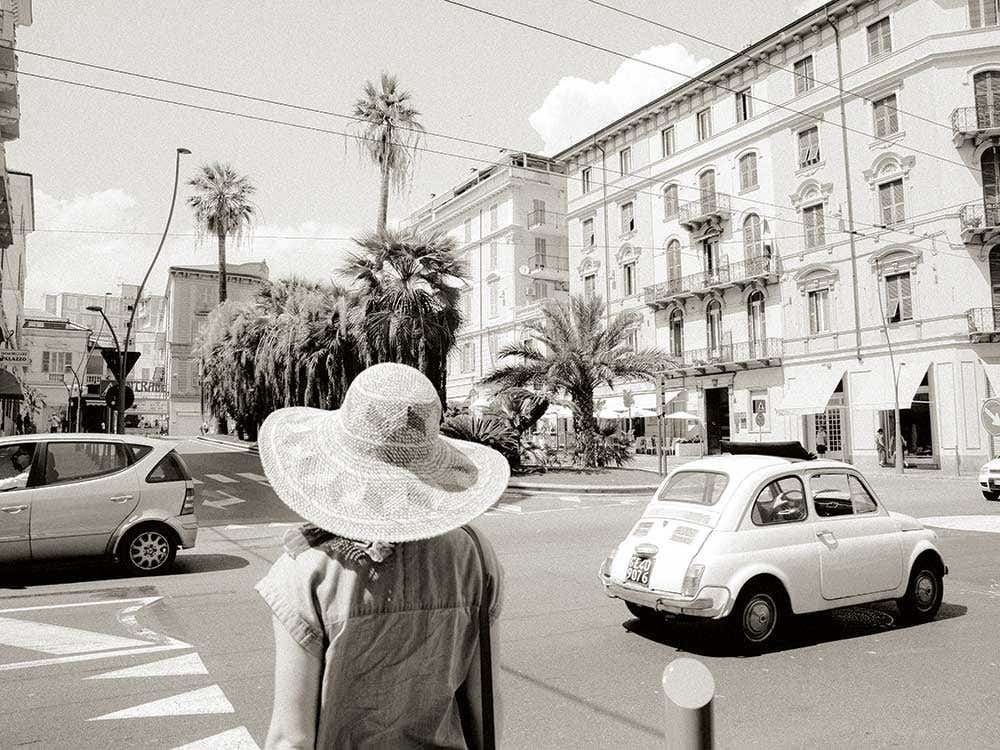
Taggiasca trees were first cultivated by Saint Columban monks in the 17th and 18th centuries, and when the wind blows the right way, it exposes the leaves’ silvery undersides, giving the landscape a constant, flickering sheen and earning the area the nickname Valle Argentina, meaning “silver valley.”
Pesto and Trofie Pasta
In Genoa, pesto is most commonly tossed with trofie, a short, twisted pasta, or trennete, a thin, flat noodle. Never heat pesto on its own—the pasta will warm it—and add it sparingly (around ½ cup pesto per pound of pasta). Get the recipe for Pesto and Trofie Pasta »
Bottles of very local oil adorn the tables of every restaurant table down the coast. San Giorgio is an elegant 1950s-era restaurant lodged in the side of a cliff overlooking the ocean near San Bartolomeo. Inside, shelves are trimmed with gilded china, tables cloaked with starched tablecloths, and outside on the terrace, a raucous group of Italians plows through a five-course meal and what looks like a dozen bottles of vermentino. When Alessandro Barla, co-owner and grandson of San Giorgio's founder, drops off a plate of daffodil yellow mandilli di seta, gathered in a neat pile and crowned in emerald green pesto, he points to the olive oil bottle. "Maybe add a little bit more," he says. It's good advice and applies equally to the focaccia, pane fritto (fried bread), and crusty wedges of a country loaf. The pesto here, made by Alessandro's mother, Caterina Barla, is puréed to a velvety consistency, the elements smoothly emulsified. It's golf-course green—bright, manicured, clean, and dotted with pine nuts. A Genoese would not eat this at home; it is much too polished. Still, it's good. The sea is just a stone's throw away and the sun is setting. The alchemy of place is at work.
Just on the other side of the Ligurian border, sunflower fields flank the road into Tuscany’s Migliarino regional park. The sky is heavy with rain clouds and thunder trembles somewhere in the distance. The hulking pines are gothic, Gorey-esque. Their trunks—clean of branches and the circumference of two arm spans—are topped with a canopy of needled pom-poms spraying in every direction, throwing gloomy shadows across the road. This park is the territory of pinoli gatherers, and these stone pine trees bear some of the world’s most expensive nuts. Like mushrooms or truffles, pine nuts are gathered or foraged; cultivation is rare. In late summer or autumn, unopened cones are pulled from the trees, steamed, and stripped of their seedpods, which are then cracked to reveal their slender white nuts.Pinoli have been harvested since prehistoric times, and the trees’ crackled, amber bark—fused together in places with drippy, fossilized sap blisters—makes them look as if they’ve been around for several thousand years. In late June, the cones haven’t yet dropped, but a few, the size of mangoes and faded from the sun, loll around beneath their trees. Between thick, carved-looking petals a few seedpods are still intact. With a bit of prying along a seam on one side, the pods can be broken open to bare the now dusty, dried seed. But when the seeds are fresh, they’re fleshy and creamy, with less bite than their Asian counterparts—excellent for creating a velvety base for pesto.
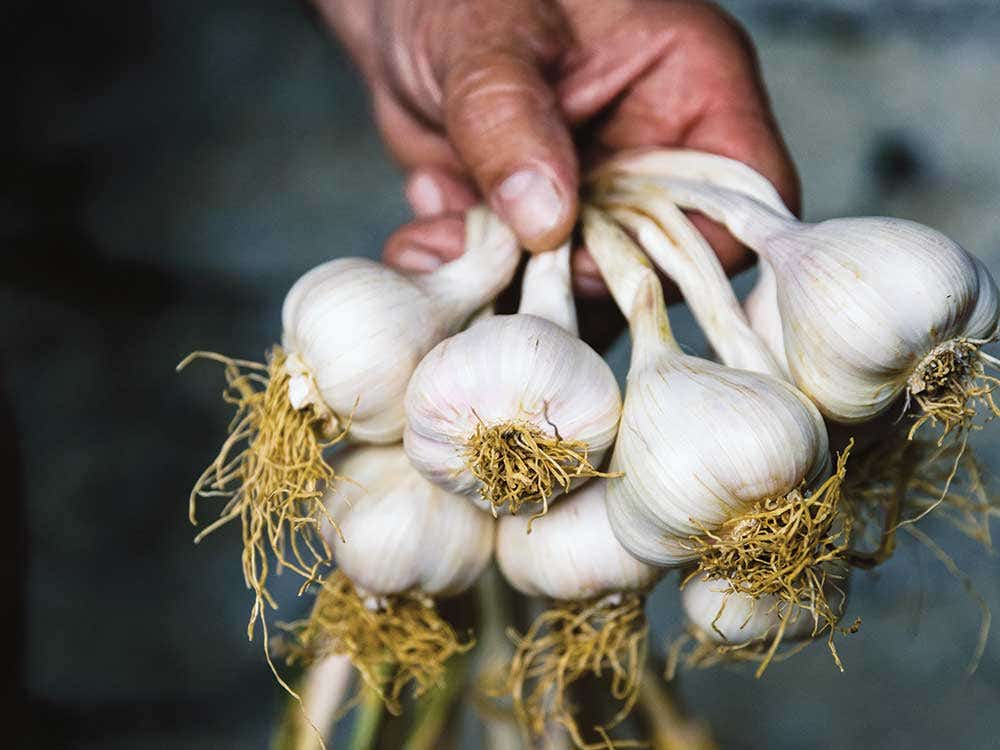
Pine nuts weren't always a part of the pesto doctrine. The earliest recipe, which appeared in Giovanni Battista Ratto's 19th-century text La Cuciniera Genovese, includes them, but many early Genoese references overlook the ingredient (and even allow that basil can be substituted with parsley or marjoram). Sometimes walnuts, a more abundant Italian crop, are noted as a worthy stand-in, but today, the recipe has become more canonical, almost always specifying Italian or Mediterranean-harvested pinoli.
Back in Liguria, on the Levante side of the region—"coast of the rising sun"—towns are set like a chain of battered estate jewels every few miles along the rocky seaside: Rapallo, Santa Margherita, Portofino, La Spezia, and Portovenere. Each is edged with striped beach huts and old men in very small swimwear. Graying couples sip martinis on terraces, and monstrous crumbling mansions are overrun with wisteria and bougainvillea that creeps up and over chipped louvers. Here, Mary Shelley dreamed up Frankenstein (and her husband, Percy Bysshe Shelley, drowned in what is now called the Bay of Poets). Charles Dickens wandered the seashore. D.H. Lawrence wrote about a fantastical octopus, and Lord Byron stirred up the curiosity of the more conventional locals. And it looks as if no one has bothered to paint a shutter or patch a wall since.
There is a walk along the ocean that weaves in and out of abraded resort towns, from Rapallo to Portofino. It terminates at San Fruttuoso where a Benedictine abbey casts shade across a rocky beach lapped by turquoise water. (You can take a boat, but a hike helps to renew an appetite.) Through the abbey’s base and up a short hill is Da Laura. Beneath a vined trellis and a handful of lemon trees, a shirtless old man sits grumpily in a folding wooden chair. This is Renzo Bruno, the owner, and the arrival of midday diners sends him into the kitchen. Laura was his mother. His wife, Mariangela, now works in the tiny slice of a kitchen. There are only a dozen or so tables, all outdoors, looked after by the couple’s children and Davide, a friend of the family. Wine is served from large icy bottles without labels.
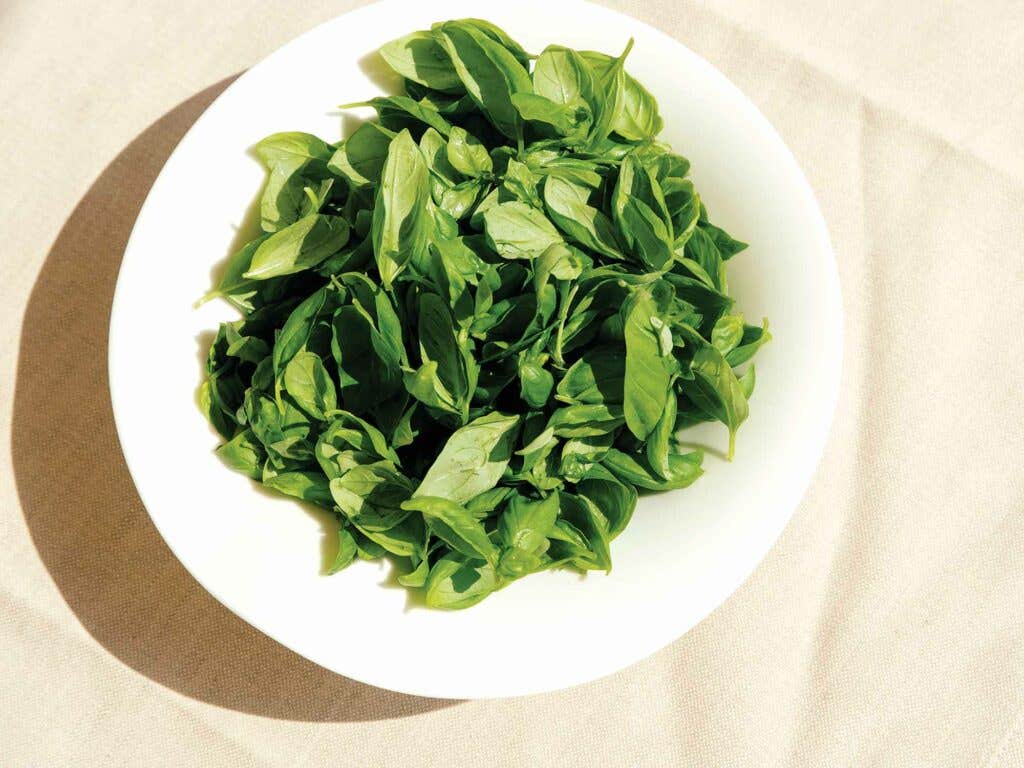
In the 1950s, Laura Devoto made mussels and pesto at a beach shack on the cove (in Liguria, pesto is appropriate beach food, naturally), and eventually she opened a restaurant beneath the shadow of the abbey. It recently moved into a nook just adjacent to the medieval structure. Throughout the afternoon, people from all over the world arrive for the unearthly pesto, yet Da Laura’s satisfying inaccessibility provides protection from feeling overrun or discovered.
When a humble platter of mandilli di seta arrives, it appears as a topographical chart of some verdant hilltop terrain. Light green sauce is layered with pale pasta sheets draped like a bolt of silk into a gauzy heap all dusted in Parmigiano. It’s easy to imagine what it would feel like to be tucked in between the folds of pasta. The sauce is salty, fresh, and delicate, luminous in its balance. Pots clang from the kitchen doorway. Waves can be heard and the air is briny. A beachgoer lopes below, beneath the abbey’s soaring archways. Here, in a courtyard of lemon trees, knotted vines, and wobbly patio furniture in the beating sun, pesto feels at home.
How to Make Real-Deal Pesto Genovese
Where to Eat Pesto at the Source
Il Genovese In a humble trattoria in the center of Genoa, pesto master and ambassador Roberto Panizza serves his famous recipe every which way.
Baccicin dü Carü This little cottage in the hills west of Genoa is known for its mortar-and-pestle pesto served over gnocchi and tag-liatelle with marjoram.
Ö Magazín On a slice of Portofino's harbor, the Mussini family serves homey, sophisticated food made from generations-old recipes, including pesto.
Da Laura Above the San Fruttuoso abbey, this tiny restaurant is known for its green lasagne and mussels marinara. Hike or take a ferry from nearby Portofino.
San Giorgio Arguably one of the region’s best fine-dining options—with a view—San Giorgio serves pesto with homemade mandilli di seta.
Keep Reading
Continue to Next Story










